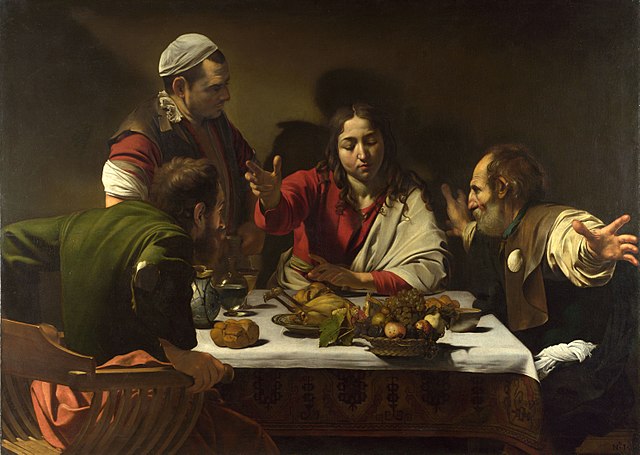
The Second Sunday of Easter is also called Divine Mercy Sunday.
Lectionary readings (45).
The Gospel from John is (1st) Our Lord’s appearance to the apostles on Easter evening with his gift to them of the power to forgive sins and (2nd) His appearance the following Sunday and his encounter with Thomas.
For a full outline that focuses on God’s mercy and our call to be merciful, click here.
Below, I offer a breakdown of the Catechism points relating to the work of redemption that Christ performed for all those just souls who died before His Passion and Resurrection.
Doctrine: Christ Descended into Hell
- To be raised from the dead requires having been dead. When Christ died, what was actually dead? The answer is his human body. His human soul did not die. Because they are simple and immaterial, human souls, once created, are immortal. Also, Christ’s divine person did not die. Rather, the divine person of Christ, with his human soul, “sojourned in the realm of the dead prior to his resurrection.” However, “he descended there as Savior, proclaiming the Good News to the spirits imprisoned there.” (CCC 632)
- What was the place Christ went down to? “Scripture calls the abode of the dead, to which the dead Christ went down, ‘hell’ – Sheol in Hebrew or Hades in Greek – because those who are there are deprived of the vision of God.” Both the good and the bad dead awaited their Redeemer. But as they waited their lot was not identical, “as Jesus shows through the parable of the poor man Lazarus who was received into ‘Abraham’s bosom’.” Accordingly, “Jesus did not descend into hell to deliver the damned, nor to destroy the hell of damnation, but to free the just who had gone before him.” (CCC 633)
- There, Christ preached his Gospel to the dead so that his redemptive work reached “all men of all times and all places, for all who are saved have been made sharers in the redemption” (CCC 634).
- Christ had proclaimed, “Truly, truly, I say to you, the hour is coming, and now is, when the dead will hear the voice of the Son of God, and those who hear will live” (Jn 5:25). Christ fulfilled his own prophecy when he descended into hell. “Jesus, ‘the Author of life’, by dying destroyed ‘him who has the power of death, that is, the devil, and [delivered] all those who through fear of death were subject to lifelong bondage.’ Henceforth the risen Christ holds ‘The keys of Death and Hades’, so that ‘at the name of Jesus every knee should bow, in heaven and on earth and under the earth’.” (CCC 635)
- The Catechism ends this exposition of Christ’s descent to the dead with a moving excerpt from an ancient homily on Holy Saturday (CCC 635):
Today a great silence reigns on earth, a great silence and a great stillness. A great silence because the King is asleep. The earth trembled and is still because God has fallen asleep in the flesh and he has raised up all who have slept ever since the world began. . . He has gone to search for Adam, our first father, as for a lost sheep. Greatly desiring to visit those who live in darkness and in the shadow of death, he has gone to free from sorrow Adam in his bonds and Eve, captive with him – He who is both their God and the son of Eve. . . “I am your God, who for your sake have become your son. . . I order you, O sleeper, to awake. I did not create you to be a prisoner in hell. Rise from the dead, for I am the life of the dead.”
The Homiletic Directory offers these Catechism Points and themes for the Second Sunday of Easter.
- CCC 448, 641-646: appearances of the risen Christ
- CCC 1084-1089: the sanctifying presence of the risen Christ in the liturgy
- CCC 2177-2178, 1342: the Sunday Eucharist
- CCC 654-655, 1988: our new birth in the Resurrection of Christ
- CCC 926-984, 1441-1442: “I believe in the forgiveness of sins”
- CCC 949-953, 1329, 1342, 2624, 2790: communion in spiritual goods
- CCC 612, 625, 635, 2854: Christ the “Living One” holds the keys of death
Leave a Reply